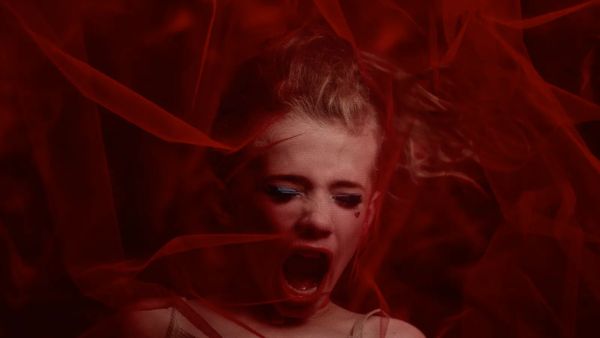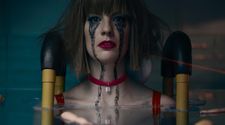 |
| Electra Photo: Festival de Cannes |
One of the boldest and most adventurous short films of 2023, though sadly not one that made it all the way to the top awards, Czech director Daria Kashcheeva’s Electra uses a radical blend of live action, stop motion, mannequins, latex and gore to evoke its adult heroine’s reimagining of her tenth birthday party. A hot ticket after the success success of her previous short, Daughter, which secured an Oscar nomination in 2019, it premiered at Cannes, and I attended a press conference a few months later at which Kashcheeva spoke about her vision.
“When I started to develop the project, I actually started from the idea that I wanted to try to work with actors in animation,” she says. “So I started to think mostly about the technique and I didn't have any story in mind. I just started to think, what could I do with a body, with this kind of material skin? And I came to the topic of body perception and sexuality. I started to write the script mainly from this kind of experimental exercise around the topic of body and what could I do with the actors.
 |
| Electra Photo: Festival de Cannes |
“Later, maybe a year later, after thinking about the technique and I didn't have the story, I felt that I needed a kind of core which would take all this script, and I found a book about the Elektra complex in modern society. It inspired me a lot, and it somehow connected with all my images and my technical ideas.
“The main idea of this book was that in the modern society, when almost every second marriage ends in divorce, there are actually a lot of abandoned children. If we talk about female children especially, there are really a lot of Elektras among us. And actually, the Elektra complex is an issue with the feelings between father and daughter, which could become a bit more intimate and bit more sexual. And it's also about rebellion against the mother and competition between mother and daughter for the father's attention. It becomes really a big issue when father departs, which is quite common in modern times. So it inspired me a lot.
“As Carl Gustaf Jung describes the Elektra complex using the myth of Electra, I found a lot of inspiration in these ancient myths, which I think always are really modern and always reflect something which we have inside us, something which we have in our subconscious. It sometimes could be uncomfortable but I think it's really important to go deep into our subconscious and to go deep into our shadow parts of ourselves to understand ourselves better."
Shooting the film the way she did was incredibly ambitious. She details her process.
“The biggest challenge for us was scale, because actually, as we used actors, I understood if I were to have actors and puppets in one frame, I needed the puppets to be human size, and I needed all the sets to be human size. We always had to build real rooms, human sized rooms, which was expensive and time consuming. So we needed quite a big team for this – and also to make puppets which could be animated on this scale. It was a big challenge.
“We made them in France in GPL Studios, where they are really experienced in stop motion animation. Also quite a big challenge was that I really wanted to make everything in front of the camera and as little as possible in post production. So we made all the facial expressions and lip sync and all the stuff in puppets which we could animate in front of the camera, frame by frame. So all the facial expression was made on the set.
 |
| Electra |
The other big challenge was to make the human body also kind of a puppet, and to stabilise it somehow. So we developed a system of rigs to support bodies, to support the head, because the body is always in movement and we needed to support it as much as possible. Also to make it comfortable for actors who had to stay without movement, which is really hard for them. So it was a lot of experimentation and also learning during the process.”
It was an international project, she explains.
“It was actually a three country co-production. In France, we made puppets and also we made music. Also we had the Slovakia, where we made visual post production, some cleaning and colour grading. But actually the shooting and most of the work was made in Czech Republic. And also it is actually my student film. It's my graduation film. And in this case, school was really helpful for us. They were really generous. They allowed us to stay in the studio for four and a half months – in the professional studio with all the support of all the departments of the studio, which was really a big help. It was almost kind of live action shooting for four and a half months because on all the days, we had actors, so we had makeup artists, costume designers, set designers and all the big team, which is usually for live action. So it was a big challenge for all of us.”





















